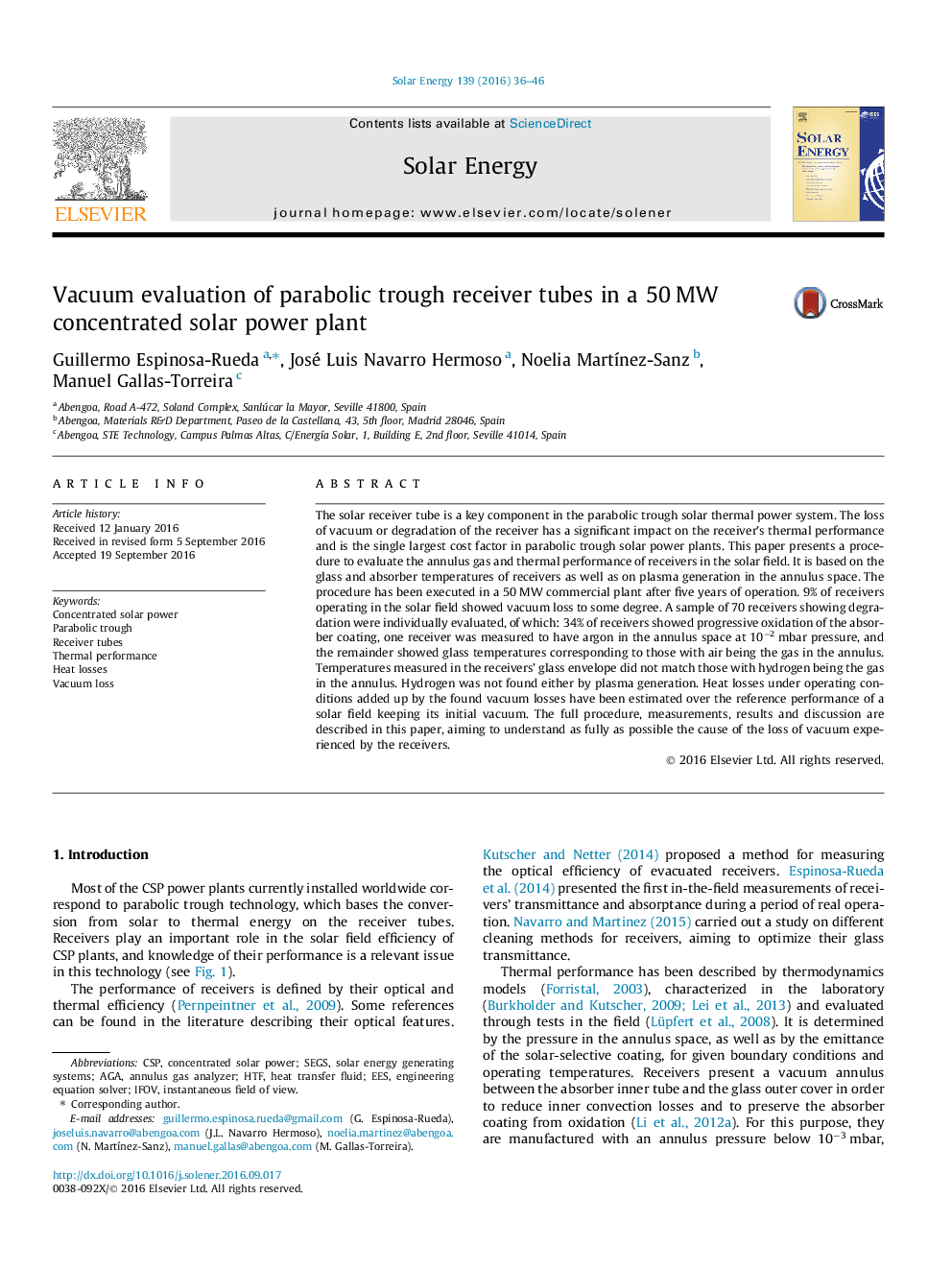| Article ID | Journal | Published Year | Pages | File Type |
|---|---|---|---|---|
| 5451369 | Solar Energy | 2016 | 11 Pages |
Abstract
The solar receiver tube is a key component in the parabolic trough solar thermal power system. The loss of vacuum or degradation of the receiver has a significant impact on the receiver's thermal performance and is the single largest cost factor in parabolic trough solar power plants. This paper presents a procedure to evaluate the annulus gas and thermal performance of receivers in the solar field. It is based on the glass and absorber temperatures of receivers as well as on plasma generation in the annulus space. The procedure has been executed in a 50Â MW commercial plant after five years of operation. 9% of receivers operating in the solar field showed vacuum loss to some degree. A sample of 70 receivers showing degradation were individually evaluated, of which: 34% of receivers showed progressive oxidation of the absorber coating, one receiver was measured to have argon in the annulus space at 10â2Â mbar pressure, and the remainder showed glass temperatures corresponding to those with air being the gas in the annulus. Temperatures measured in the receivers' glass envelope did not match those with hydrogen being the gas in the annulus. Hydrogen was not found either by plasma generation. Heat losses under operating conditions added up by the found vacuum losses have been estimated over the reference performance of a solar field keeping its initial vacuum. The full procedure, measurements, results and discussion are described in this paper, aiming to understand as fully as possible the cause of the loss of vacuum experienced by the receivers.
Keywords
Related Topics
Physical Sciences and Engineering
Energy
Renewable Energy, Sustainability and the Environment
Authors
Guillermo Espinosa-Rueda, José Luis Navarro Hermoso, Noelia MartÃnez-Sanz, Manuel Gallas-Torreira,
